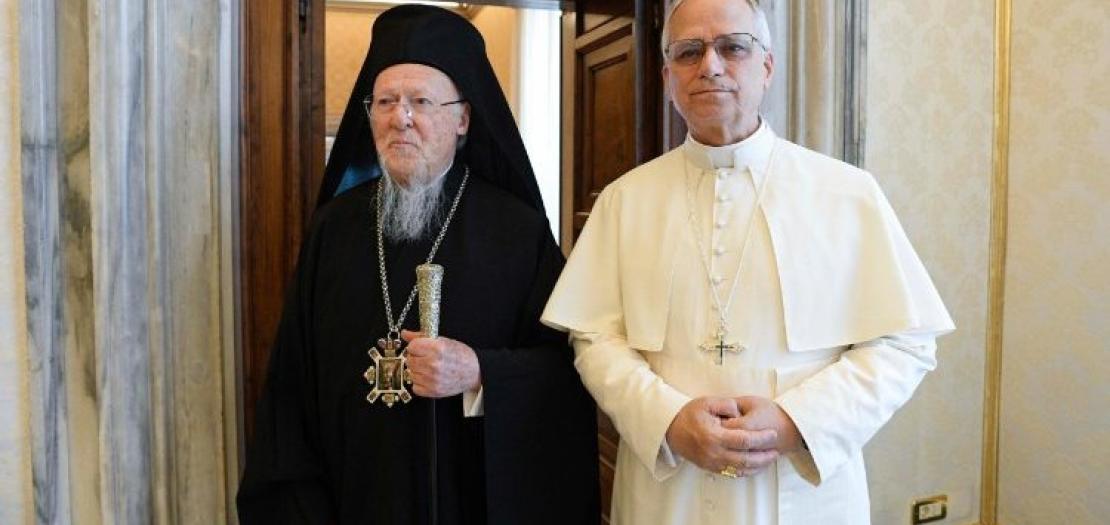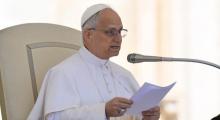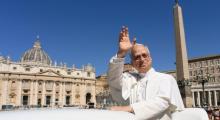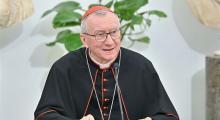Issued by the Catholic Center for Studies and Media - Jordan. Editor-in-chief Fr. Rif'at Bader - موقع أبونا abouna.org

Ut unum sint (UUS), Pope St John Paul II’s landmark encyclical on ecumenism and the Catholic Church, turns thirty this year, having been signed on May 25, 1995, the Solemnity of the Ascension of the Lord.
“The importance of Ut unum sint is that it builds on the Second Vatican Council’s decree on ecumenism, Unitatis redintegratio. And it officially confirms the Catholic Church’s commitment to ecumenism,” says Deacon Daniel Galadza, a professor at Rome’s Pontifical Oriental Institute.
Deacon Galadza, a member of the Ukrainian Greek Catholic Church, highlights aspects of UUS that touch on the Eastern Churches, notably the use of the term “sister churches” for Eastern churches not in communion with Rome; and the concept of the Church “breathing with both lungs”; that is, with all the ancient traditions of the Church, both East and West.
UUS, says Galadza, emphasizes Christ’s desire “that all may be one,” from which the encyclical takes its name.
Ut unum sint at thirty
Despite being written thirty years ago, parts of Ut unum sint still have particular relevance for the Church today. As Deacon Galadza notes, UUS was looking ahead to a Jubilee Year, the Great Jubilee of 2000, while today we are similarly celebrating a jubilee; and, as in 1995, Ecumenical Patriarch Bartholomew I – who is mentioned by name in UUS – continues to lead the Eastern Orthodox Church as “first among equals.”
And while there are numerous aspects that still await agreement or consensus, Deacon Galadza points to “notable steps” in that direction in recent decades, including apologies made by the Popes to the Orthodox churches and the restoration of relics to the Patriarchate of Constantinople.
The professor also highlights the presence of Orthodox patriarchs or official delegations at various papal celebrations, which has now become almost routine. Deacon Galadza says that this is “a wonderful thing, a real sign that ‘all may be one’ is almost taken as a common, everyday event in the life of the Church.”
Since the publication of Ut unum sint, he continues, there have also been numerous documents, including statements on the Filioque (the Latin word meaning “and the Son” that was added to the Nicene Creed) and papal primacy; promising ecumenical dialogues; and movement on issues relating to intercommunion between the churches.
Relations with Eastern Christians has already been a focus of Pope Leo XIV’s pontificate, with the new Pope holding a jubilee audience for members of the Eastern Catholic Churches as one of his first major events.
Jubilee for Eastern Churches
Already on the papal calendar prior to the death of Pope Francis, the audience was “providentially” able to go forward, Galadza notes, after Pope Leo’s election. “It was a unique experience highlighting the importance of the Eastern Churches for the Church of Rome, as a sign of unity,” says Deacon Galadza, who was present for the event.
Although the event was intended primarily for those Eastern Christians in union with Rome, and Pope Leo did not directly speak about ecumenism, Deacon Galadza states “any time the Pope speaks to the Eastern Churches, one can understand that he is speaking to all of them, whether they are in union with Rome or not.”
This is true especially because “the Eastern Catholic Churches also have a vocation to work for unity, and a unity in line with the teachings of the Catholic Church,” he explains, noting that Vatican II’s Unitatis redintagratio understands unity “as a true unity in Christ” rather than one church taking over another.
Deacon Galadza says that many of the topics touched on by Pope Leo in his address “would catch the attention of the Eastern Orthodox and Oriental Orthodox Churches,” notably quotations by Greek saints Isaac of Nineveh and Simeon the New Theologian, as well as a quote from Pope Leo XIII forbidding Latin clerics from “proselytizing” Easterners.
Galadza also notes the Pope’s concern for Christians in the Holy Land and the Middle East, Ukraine, Tigray in Africa, and other areas of conflict where Christians are primarily Eastern. “So any appeal for peace, or addressing the difficulties and suffering of the Christians there would also resonate with the Orthodox.”
Hoping for unity
Looking forward thirty years on from the publication of Ut unum sint, Deacon Galadza highlights once again the need for unity. “Unity is always something we are hoping for,” he stresses, even if it often seems like something that that will only be achieved in the distant future. However, he points out, even if unity does not seem imminent, now “it’s not as far away as it might have seemed.”
Signs such as the presence of the Ecumenical Patriarch at the inauguration of Pope Leo’s Petrine Ministry are “already a sign of this unity that we’re praying for,” he says, aiming at “the common unity in communion one day, God willing, at the altar through the Eucharist.







